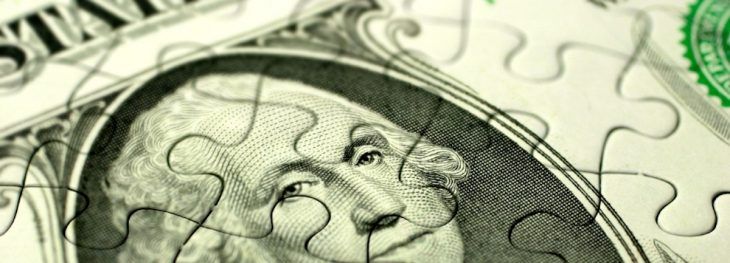Economist: Stimulus checks, no stay-at-home order softened financial impact in Arkansas
by June 7, 2020 9:59 am 6,448 views

UA Walton College of Business economist Mervin Jebaraj said initial signs of how Arkansas is faring from the COVID-19 pandemic indicate the state was not hit as hard as neighboring states.
Jebaraj discussed Sunday (June 7) the latest Arkansas revenue report, which showed about 2.8% drop-off in consumer spending in April compared to a year ago. Overall, tax collections from the report released June 2 show lower revenues of 2.9% with individual income taxes up 1.3% over the previous year.
“I think the difference is that Arkansas never really had a stay-at-home order,” he said. “I think what we’re seeing from the data — at least in people’s mobility, traffic statistics, and consumer spending data that we’ve seen — is that people sort of started coming back out and spending money right around mid-April when those $1,200 stimulus checks hit households. And so you see an increase, sort of the decline in spending that happened from mid-March all the way through mid-April, kind of turned around almost at exactly the day that the first checks started hitting people’s bank accounts so that obviously played a role in getting people back out and spending money in the economy.”
Jebaraj said that big box retailers benefited more from the spending than smaller Main Street businesses. The ability to have more capacity and spacing was an advantage.
“The biggest increase we’ve seen in consumer spending has been in general merchandise stores, home goods and furnishing stores, larger, big box retail that have more space if people want to physically distance, that may be lax in their enforcement of how many people are inside the building, whether or not they’re maintaining physical distance, and obviously a lot of bigger box stores are not imposing mask requirements. [This] is different than smaller businesses, like restaurants and bars and those types of establishments, where consumers are required to maintain that six foot distance and required to wear masks for at least a certain amount of time as they enter and leave the business,” he said.
Arkansas’ unemployment rate remains below the national average of 13.3%. The state has seen its jobless rate jump from 3.5% in February to 10.2% in April, the latest month reported. Jebaraj is eyeing another measurement of unemployment that he views as concerning.
“A measure that I like to look at is obviously employment population ratio, that’s the number of people employed divided by the population of the state over the age of 16, which typically is what gets you the labor force participation rate as well,” he said. “Arkansas dropped from just over 55% about 56% employment population ratio to just north of 50% employment population ratio. These are the most recent statistics that we have for the month of April.”
Jebaraj also noted the state lost about 111,000 jobs in April. The majority of those job losses came from two industries.
“Every single sector lost jobs, but the biggest job losses came in leisure and hospitality, about 41,000 jobs lost in that sector year-over-year in Arkansas. And that was a sector that had done really well in the last decade, and so to see that dramatic of a job loss in that particular sector is tough to swallow. The next biggest job loss, again, surprising to a lot of people, was in healthcare. That lost about 20,000 jobs. So, leisure and hospitality 41,000 jobs and healthcare about 20,000 jobs.”
You can watch Jebaraj’s full interview in the video below.
